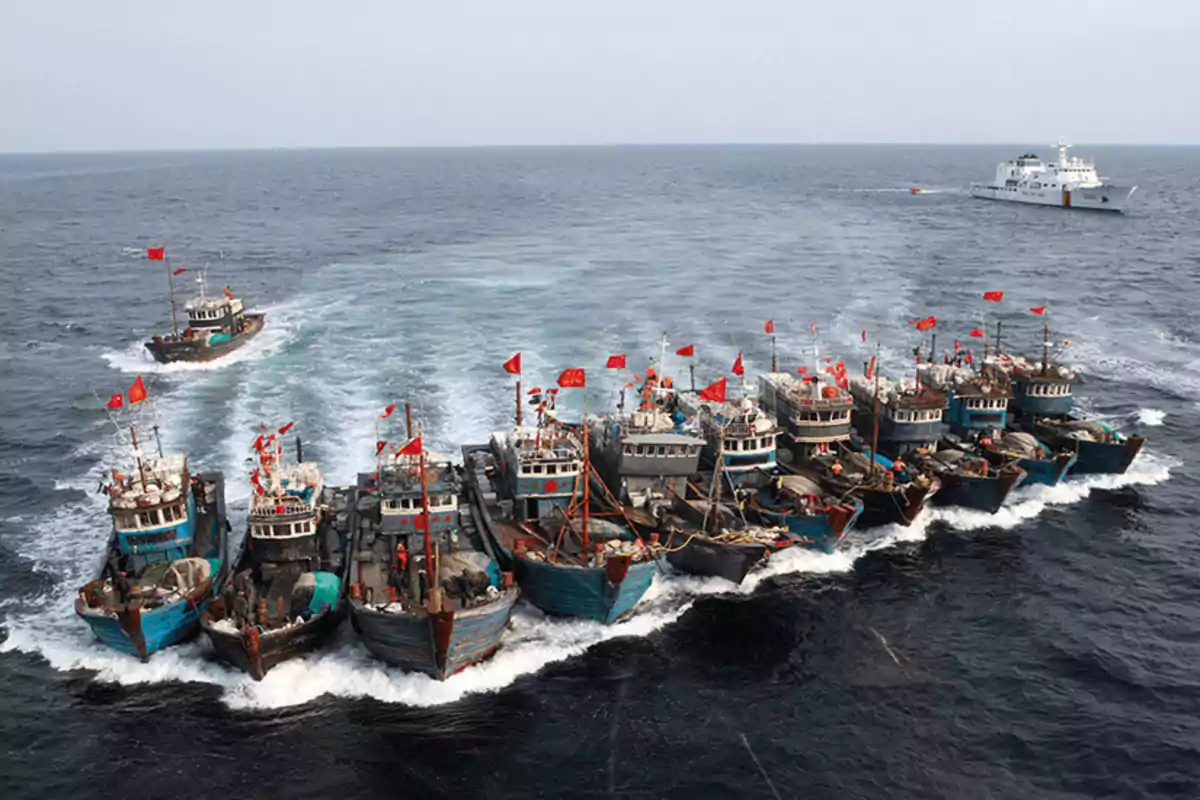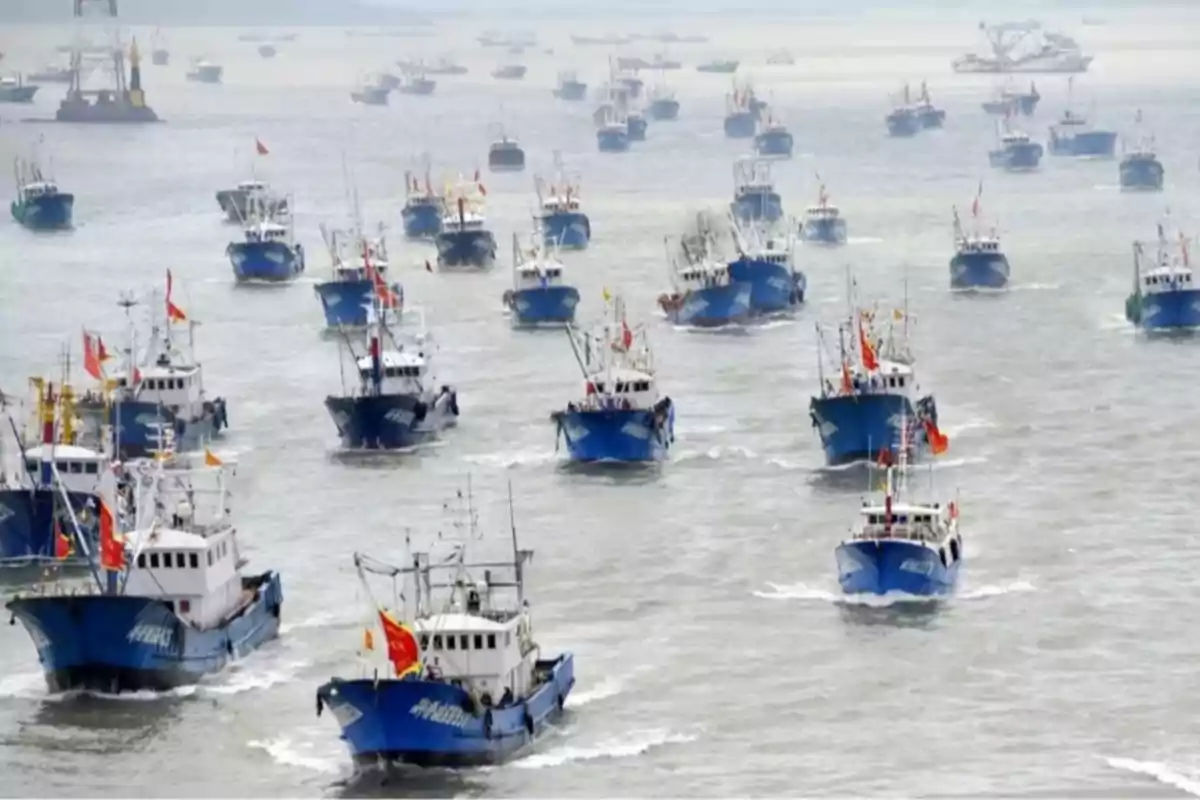
With Chile's help, Chinese vessels seek to fish illegally in the Argentine Sea
A recent investigation indicates that Chile has become a new logistics hub for the Chinese fishing fleet
Despite the significant efforts by the Javier Milei administration to eliminate illegal fishing in the Argentine Sea, the pressure exerted by the Chinese fishing fleet appears to be continuously increasing, whether operating at the limit of the so-called "Mile 201" or attempting to illegally enter the Exclusive Economic Zone (EEZ) belonging to Argentina.
A recent investigation indicates that Chile has become a new logistics center for these vessels, serving as a closer refuge from which to operate in the Atlantic sector of the Strait of Magellan. Every year, around November, hundreds of vessels from the Asian giant, which have previously exploited the waters off Ecuador, Peru, and Chile, move to fish off the Argentine coast.
Traditionally, ports such as El Callao in Peru and Montevideo in Uruguay were strategic points for foreign fleets, including Chinese ones. However, after illegal fishing was detected within its EEZ in 2018, Peru tightened controls on foreign vessels.

This caused the Chinese presence in its ports to decrease since 2020. A brief regulatory relaxation between 2023 and 2024 allowed a temporary return, but the reinstatement of strict rules once again closed the doors to those vessels that refuse to comply with basic regulations.
"In this context, Chile has emerged as the new logistics hub," explains a report prepared by Milko Schvartzman, a fishing specialist at the Environmental Policy Circle (CPA). "Since mid-2024, northern Chilean ports such as Arica and Iquique have recorded an explosive increase in the arrival of Chinese fishing vessels, rising from zero entries in 2023 to 25 in the same period of 2024, while in Peru entries fell from 61 to zero," the investigation details.
"This will facilitate the stay, permanence, docking, and exploitation of Chinese vessels in the Argentine Sea," Schvartzman warned in an interview with Infobae.
The dangerous Chinese fleet
The investigation describes that, with up to 600 vessels operating simultaneously off the coasts of South America, the Chinese distant-water fishing fleet is now the most dominant on the planet. Backed by multi-million-dollar subsidies from the Chinese Communist Party that cover fuel, vessel construction, and direct participation by the regime, this fleet operates outside environmental, labor, and maritime safety regulations.

Documents and complaints have revealed systematic human rights abuses, including forced labor, physical violence, and even deaths on board. Added to this is the use of reefer ships (refrigerated cargo vessels) and tankers that enable transshipment on the high seas, concealing the origin of catches and making it difficult to track fishing activity.
To sustain this machinery, access to regional ports that provide services for unloading unregulated catches, repairs, refueling, and crew rotation is essential.
According to Schvartzman, this change not only implies a logistical reconfiguration but also a paradox: Chile, which seeks to position itself as the host of the Treaty for the Conservation and Sustainable Use of Marine Biodiversity "beyond national jurisdictions" (BBNJ, by its English acronym), is providing support to a fleet internationally accused of plundering the seas.
Even worse, the report points out, among the vessels now calling at Chilean ports are at least two, Fu Yuan Yu 7871 and Fu Yuan Yu 7872, whose owners have been sanctioned by the United States Department of the Treasury due to illegal fishing, forced labor, and sexual violence.
More posts: